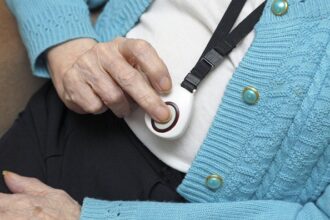The healthcare industry has been slow to adopt technology as it relates to patient care. However, as technology becomes more advanced, there is a move to create smart hubs in hospitals and allow for remote patient monitoring. Additionally, in the nursing field, technology is helping to reduce the most common medication errors and so much more. These technologies can help improve efficiency and quality of life for nurses and patients alike. Here are seven ways technology is improving the nursing profession:
Mobile Phones and Devices at Work
Mobile phones and devices are important tools for nurses. The ability to access patient information and communicate with other healthcare providers is critical for the efficient operation of any hospital or clinic. Nurses can use mobile phones to help them make decisions about what course of action to take with each patient, as well as how best to coordinate care between departments, such as when discharging a patient from one department into another’s care.
Online Training and Certifications
Nurses require training to maintain their licensing. Additionally, the ability to study for tests is also made simpler because of technology. For instance, nurses can access ANCC practice questions more easily to get their credentials and even schedule their tests online. These training opportunities can help nurses stay up to date with new technologies and best practices and improve patient care.
Telehealth Apps
Accessing healthcare via telehealth is an excellent way to stay in touch with your doctor and nurses. You can use them to get quick answers about your health, find out if your symptoms need further treatment, and more. The nurses can communicate with the doctors to find out if there should be any change in your treatment plans as a result of what they see and hear in these meetings.
Remote Patient Monitoring
Remote patient monitoring is a way to monitor patients with technology such as sensors or wearable devices. On busy nursing floors, these remote devices can help alert nurses to a problem sooner. This can help them treat patients more quickly when something goes wrong, and they are not in the room. Additionally, this information can be sent from patients who are at home. This can give care providers, including nurses, better information to help treat their patients.
Social Media
Social media is a great way to learn about other resources out there. You can use it to promote health and wellness, improve patient care, provide education and training, engage patients in their own care, and so much more. Many medical professionals on social media share important health information and studies with their followers.
Wearable Technology
As an increasing number of nurses realize the benefits of wearable technology. These devices are excellent tools to help monitor vital signs, sleep information, and more. It’s likely that you will see more and more patients wearing these devices. If a patient has been diagnosed with a condition such as diabetes or high blood pressure, wearable devices may also be used to monitor their medication intake or blood sugar levels. Some hospitals have begun using these types of devices as part of their patient care programs because they provide real-time information. This info helps nurses to intervene quickly if problems arise.
Virtual Reality
Virtual reality (VR) is a technology that allows users to interact with computer-generated environments and objects in real-time. It’s often used for gaming, but it also has applications in healthcare. For example, VR can be used to help patients manage their pain during procedures or surgeries by distracting them from the actual procedure itself. This approach reduces stress hormones like cortisol, lowers blood pressure and heart rate, and even makes people feel happier after the experience.
Conclusion
As you can see, technology is improving patient care, nursing, and the patient experience. Nurses are the backbone of our healthcare system. They’re the ones who ensure that patients get the care they need and deserve. Today, technology is making it easier for nurses to do their jobs by providing tools that can be accessed anywhere at any time. This includes anything from an app on your phone or a virtual reality headset in the exam room. VR can help patients who are otherwise scared of receiving treatment have a better experience and improve their health. Additionally, technology allows nurses to get further training so that they can continue to provide excellent patient care.








